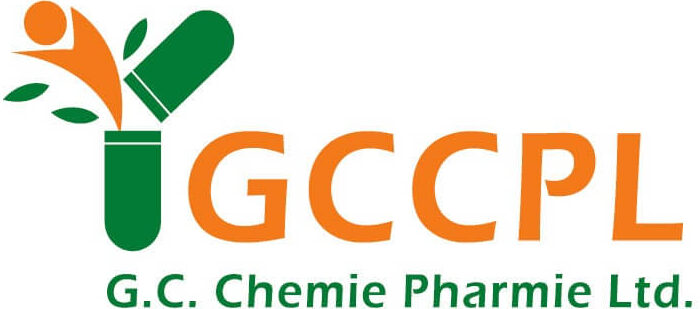Introduction
The production of affordable and high-quality generic drugs has historically been an international strength of the Indian pharmaceutical industry. However, the sector is precariously worried about new tariff measures from the United States.
A significant inflection point in the global pharmaceutical industry in 2025 is the U.S. tariffs hikes.
Recent changes in U.S. trade policy have rekindled focus on pharmaceutical and semiconductor tariffs. Although policymakers purportedly designed these tariffs to protect the domestic industry, they threaten to disrupt a manufacturing supply chain where the API manufacturers in India play a vital role.
Traditionally, the Indian pharmaceutical industry has concentrated its exports on the U.S. market. Industry reports project that Indian pharmaceutical exports were approximately $8.7 billion in 2024, representing around 31% of the country’s total exports.
This article looks at the impact of the most recent U.S. tariff hikes, the changes in strategy in the Indian pharmaceutical space, and the potential opportunities that will come from these challenges.
Understanding the U.S. Tariff Hikes (2025 Update)
President Trump has placed tariffs on imported products coming from abroad. While Trump says tariffs will encourage manufacturing and jobs in the U.S., opponents argue that they will push costs up, creating challenges for the global economy.
The U.S. government levied the tariffs to address trade imbalances, protect domestic industries, and respond to trade measures taken by other countries. It also imposed new taxes on products made in Canada and Mexico as part of broader trade and border security policy initiatives.
Businesses should pay attention to changing policies so that they can adjust their plans and ensure compliance.
Impact on Indian API & Generic Medicine Manufacturers
These represent the basic components of brand and generic drug products. The United States has imposed a 20% tax on API companies in India that supply active pharmaceutical ingredients (APIs) for anti-virals, antibiotics, cancer, and pain management medications.
Because a large portion of pharmaceutical consumption by US-based manufacturers is for bulk imported active pharmaceutical ingredients from Asia, this new tax has resulted in an immediate inflationary impact on the cost of drug manufacturing. As a result, increasing tariffs directly influences revenue, profits, and growth.
- Affordable APIs and generics from India have long been a position of competition in the marketplace. Unsurprisingly, higher taxes erode this competitive advantage, especially in relation to supplies coming from countries not subject to any tariffs.
- Mid-sized and smaller API manufacturers in India may struggle to maintain profitability because they usually have fewer options for absorbing cost increases.
Strategic Shifts: How Indian Pharma is Responding
Few industries are keeping a closer eye on events than the Indian pharmaceutical sector, as the ongoing trade talks between the United States and India appear to be nearing their conclusion.
There is a significant amount at risk as India continues to pursue market access and policy flexibility, with various new tariffs on pharmaceutical imports from the United States potentially as high as 200%. These negotiations could result in new trade policy changes or realigning each pharmaceutical ecosystem’s position.
Another sector poised for radical changes is the nutraceutical manufacturers in India, who rely on exporting to the United States and may see higher prices, particularly for raw materials moving through the pharmaceutical supply chains. We may also experience delays in licensing pharmaceutical deals as companies reconsider their cross-border partnerships.
Opportunities Amid Challenges
The economy is transforming as the Trump administration moves forward with its plans for U.S. tariff hikes in 2025. The tariffs represent a way to help American companies and correct imbalances in global supply chains and domestic markets. Some industries benefit more than others, and even if tariffs weaken productivity and viability in some sectors, the enactment of tariffs is clarifying for companies in several ways.
- Companies that provide digital products (e.g., Microsoft, Salesforce) are not significantly at risk due to tariffs. Manufacturers adjusting to tariffs would also likely increase demand for automation and supply chain analytics, a trend that can also accelerate growth.
- HCA Healthcare and its peers in domestic hospitals, clinics, and telehealth rely very little on imports. They will remain insulated from disruption from tariffs, as they always have a demand for essential services.
- The strength of the U.S. dollar and rising interest rates, indirectly caused by inflation resulting from tariffs, are favorable for banks and investment firms (e.g., JPMorgan Chase). Domestic mid-cap banks would also benefit from the growth of sectors such as steel.
Future Outlook (2025–2026)
In these two years, U.S. tariff hikes will shape how API companies in India strategize and operate in India.
- Margins will be under increased pressure as businesses continue to adjust to new tariff landscape.
- The expectation of government help, international partnerships, and increased capacity will help Indian companies reestablish their economic footing.
- While trade relations may ultimately cool off, Indian companies will note that relying entirely on a single export market poses risks.
Conclusion
Tariffs in the U.S. have become one of the toughest challenges for the Indian pharmaceutical industry. Indian pharmaceutical firms play a crucial role in reducing the cost of medicines globally and contributing to India’s economic growth. Indian pharmaceutical firms are facing a critical juncture in their growth trajectory, as exports to the U.S. are projected to rise from approximately $6.5 billion in 2019 to $8.7 billion by 2024.
The financial instability of some of the larger players in the industry also creates a need for restructuring and new overall strategies. This industry instability has been evidenced by their over-reliance on the U.S. and rising production costs.
FAQs
What are U.S. tariff hikes, and how do they impact Indian pharma?
Newly imposed U.S. tariff hikes raise the cost of goods and could impact pharmaceutical exports from India, making them more expensive for American consumers and companies.
How are API manufacturers in India preparing for global challenges?
API manufacturers in India are addressing global challenges by enhancing supply chain resiliency, increasing regulatory compliance, and upgrading manufacturing processes through the use of advanced technology.
What role do in-licensing and out-licensing play in pharma exports?
Out-licensing occurs when a company transfers the right to use another company’s technology or product to a third party or business, usually to increase profits, utilize another company’s expertise, and minimize development and market risk. In-licensing, when a company obtains the right to use another company’s technology or product, is typically used to help expand product lines or enter new or emerging markets.





